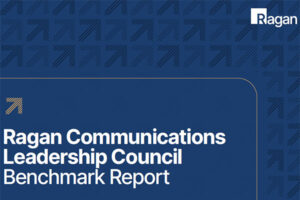How corporate communicators can maintain post-COVID clout
After a year of intense disruption, comms pros have demonstrated their mettle and immense worth. Will the gains of sway and influence remain once the crisis fades?

Communicators have long struggled for a better seat at the table through a multitude of means.
Then on one March night in Oklahoma City, everything changed. Corporate affairs quickly became fashionable again. As PRovoke Media put it:
“…it is painfully clear that the agencies that are surviving best amid this year’s chaos are those that bring industry-leading expertise in such areas as corporate reputation, crisis counsel, public affairs and employee engagement.”
As COVID-19 presented an opportunity for corporate communicators to truly contribute to public health efforts in a meaningful way, organizations rushed to call agencies for help with corporate reputation, internal communications and crisis communications. Someone had to reassure the employees. Someone needed to communicate what to do in the event of a COVID-19 outbreak. Someone had to explain the new operational processes and procedures to staff, vendors and media outlets alike. And someone had to expedite the cadence of communications to public officials to near real time.
The pendulum swung back, hard, to an old standby: corporate comms and its suits, process documents, strategy decks and employee memos. As we look ahead to a post-pandemic world, it’s tempting to think brands and organizations will remember this and maintain this emphasis on corporate communications.
History tells us otherwise. But that doesn’t mean corporate communications will go back to where things were in 2019. The past year and all of its high-profile challenges—public health, social justice, climate change—reminded us of the value of consistent strategic corporate communications programs led by senior experts.
Now that they’re in the spotlight, corporate communications pros should take advantage by staking their claim to the executive support, budget and resources they need to maintain their pivotal role. To do this, they should apply the techniques their counterparts on the brand marketing side of things have used for years to increase their budgets and influence in the boardroom:
1. Spice up your work with more photos and graphics.
Compare a project pitch or proposal created by the consumer PR team vs. one created by the corporate comms team. One looks like a term paper, filled with jargon and a lot of extra words. The other includes photos, charts and graphics, outlining consumer-driven ROI. Which one do you think will grab the attention of the decision-maker? Which one are you more likely to set aside to read later?
2. Come up with your own ideas.
It’s never been easier to find case studies of “best practices” and “lessons learned” for whatever problem you’re trying to solve. There’s sometimes less risk in following what someone else has already done, but when you rely on what’s worked for someone else, you’ve made yourself a commodity, a replacement part. Why pay top dollar for expertise if all I need to do is Google the best practice?
Instead of trying to find out what worked for someone else, start coming up with your own ideas for how to address your company’s unique problems—understanding that there arguably is no existing plan for what brands have faced in 2020.
3. Commit to those ideas, and sell them.
Any creative will tell you it’s not hard to come up with a good idea. Anyone can do that.
The real value lies in people who can get that idea into the final presentation deck, get executive buy-in, secure the budget and get final approval to execute. Stop saying: “That’s great, but we could never do that.” Stop letting the bureaucracy kill your ideas before they even get started.
4. Connect the dots to show your value.
Marketing does a great job at marketing itself. Teams create shiny, shareable video case studies that tell the story of the challenges they overcame and the results they delivered. They point to data that show that for every single dollar invested in consumer marketing, they delivered three, four or even five times that in sales.
Corporate communications, on the other hand, is too often viewed as an admin expense. Corporate reputation leaders should take advantage of the spotlight and create compelling case studies and stories that demonstrate the ROI of what they have accomplished.
By nearly every measure, 2020 has been a terrible year for agencies and marketers. Corporate PR has been one of the few bright spots. This is a golden opportunity to completely reframe the value of corporate communications.
Steve Radick is a senior vice president and senior director at BCW, one of the world’s largest full-service global communications agencies. You can connect with him at www.steveradick.com, on LinkedIn or on Twitter.






